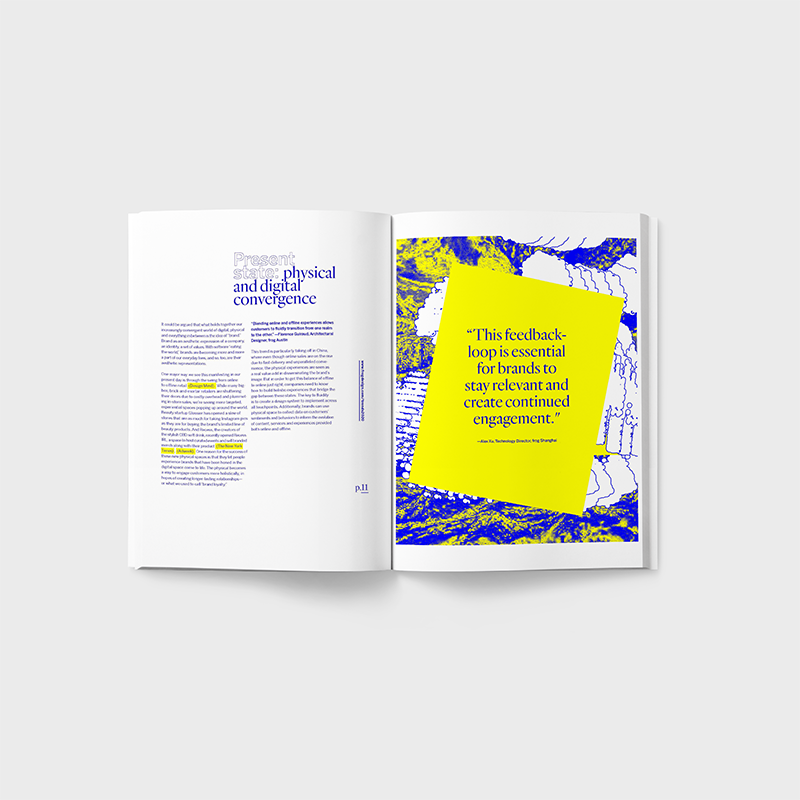
Emerging Tech Becomes the Norm
Present State: AI and VR Go Mainstream
The technology of the future is already here. As we approach the third decade of the 21st century, we will begin to see emerging technologies, from artificial intelligence to physical human augmentation devices, packaged and commodified for consumers in the form of everything from subscription services to toys. Now that we are engaging with these technologies on a daily basis (whether we realize it or not), we are already beginning to ponder what the impact and outcomes will be for individuals, society, organizations and our planet for 2020 and beyond.
Over the last few decades, we’ve seen the rapid evolution of machine capabilities enable algorithms to learn about the world in the same way we humans do. Through artificial intelligence, computers have already been able to start doing more complex human tasks at lightning speed, which has huge implications on us all. But to get the most out of predictive analytics and machine learning algorithms, you need data—good, clean, unbiased data—the sheer amounts of which are often cumbersome and expensive to come by. As more corporations are starting to integrate AI capabilities into their organizations, companies like Amazon, Google and Microsoft are already offering processing intensive services through their cloud computing platforms via subscription models.
In 2020, we will see the proliferation of generic AI capabilities and the start of domain-specific AI tasks offered as subscription models, making these processes more accessible to the masses.
The success of these models will of course come down to how well the models are designed, keeping in mind ethical data-capture processes and data privacy policies. But the impacts could be huge.
Subscription models could open up new levels of excellence in customer experience, as long as those using them are mindful about the ownership of algorithm and end-user data.
Additionally, virtual reality, which was the hot trend a few years ago, is making strides in commercial acceptance. While it seems like every company under the sun released VR headsets over the last five years, 2020 will see the death of those outdated platforms and products that couldn’t ever live up to their promise (like Google Daydream, etc). On the flip side, with 5G connectivity and advancements in chip technology, we’ll finally start to realize true “next gen” devices.
In the next five years, we’ll see devices with features like wireless connectivity, high resolution output, six degrees of freedom, AR/VR blending and eye tracking drive a new wave of VR that will start to be palatable by the masses.
We’ve already seen how applying these technologies to voice has begun to change the human experiences of shopping, leisure and learning. Next we’ll start to see how we can finally project the user/customer into a new dimension in 2020.
In a society that is increasingly connected and hungry for experiences that combine the real with the virtual, the key to satisfying the desires and needs of users/customers will lie in the adoption and application of solutions that build upon another reality.
Future State: The Physical and Digital Blend
Apart from just “virtual” realities, we are making waves in our physical reality as well. Once considered expensive and complicated tools for the tech elite, 3D-printing and 3D-scanning have quickly become relatively accessible and affordable tools for the masses. Organizations globally have already started leveraging this technology to deliver consumers long-desired products and services at the click of a button. For example, Shapify takes 3D-scans of your body to turn anyone into a toy. Open Meals serves its customers 3D-printed sushi at their digitized restaurant, Sushi Singularity, in Tokyo.
The new prevalence of 3D-printing will affect the way we perceive our surroundings, products and services, which raises new moral and ethical questions.
Consumers and companies alike will be faced with these new moral conundrums around the convenience, quality, ethics and accessibility of being able to print and send almost anything—from food to medical supplies—around the world.
Taking the blend of physical and digital one step further, we are at the advent of a new operational mode: the brain-computer interface. We’re slowly melding the space between human and computer; from keyboard typing to mouse clicks to screens taps to voice commands. Soon, we’ll see interfaces that can interpret our very thoughts. Already, we see an influx in new, low-impact devices and more computational power. Smaller chipsets will allow for smart objects to connect brain-machine interfaces and allow us to imagine a more advanced Natural User Interface, to control physical human augmentation devices, and improve digital data visualization. These devices could have huge impacts across the healthcare and accessibility spaces, but they come with their own set of risks, too.
New players are disrupting the industry with advanced devices that need both industrial design but also to define how they are integrated in a more complex ecosystem of personal devices.
While it may seem to some like we’re on the brink of a technological existential crisis, the outcomes of these emerging technologies will come down to how well we manage the blending of our physical and digital worlds. With the right design implications and processes, we feel we can use these technologies to expand our worlds and open up our senses, rather than confining us even more to the screens in our pockets.
We respect your privacy
We use Cookies to improve your experience on our website. They help us to improve site performance, present you relevant advertising and enable you to share content in social media. You may accept all Cookies, or choose to manage them individually. You can change your settings at any time by clicking Cookie Settings available in the footer of every page. For more information related to the Cookies, please visit our Cookie Policy.






